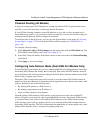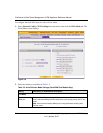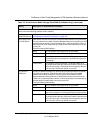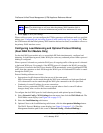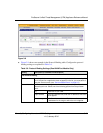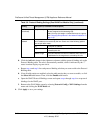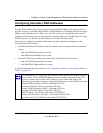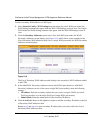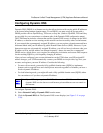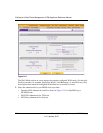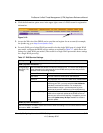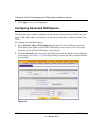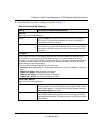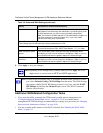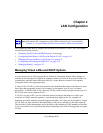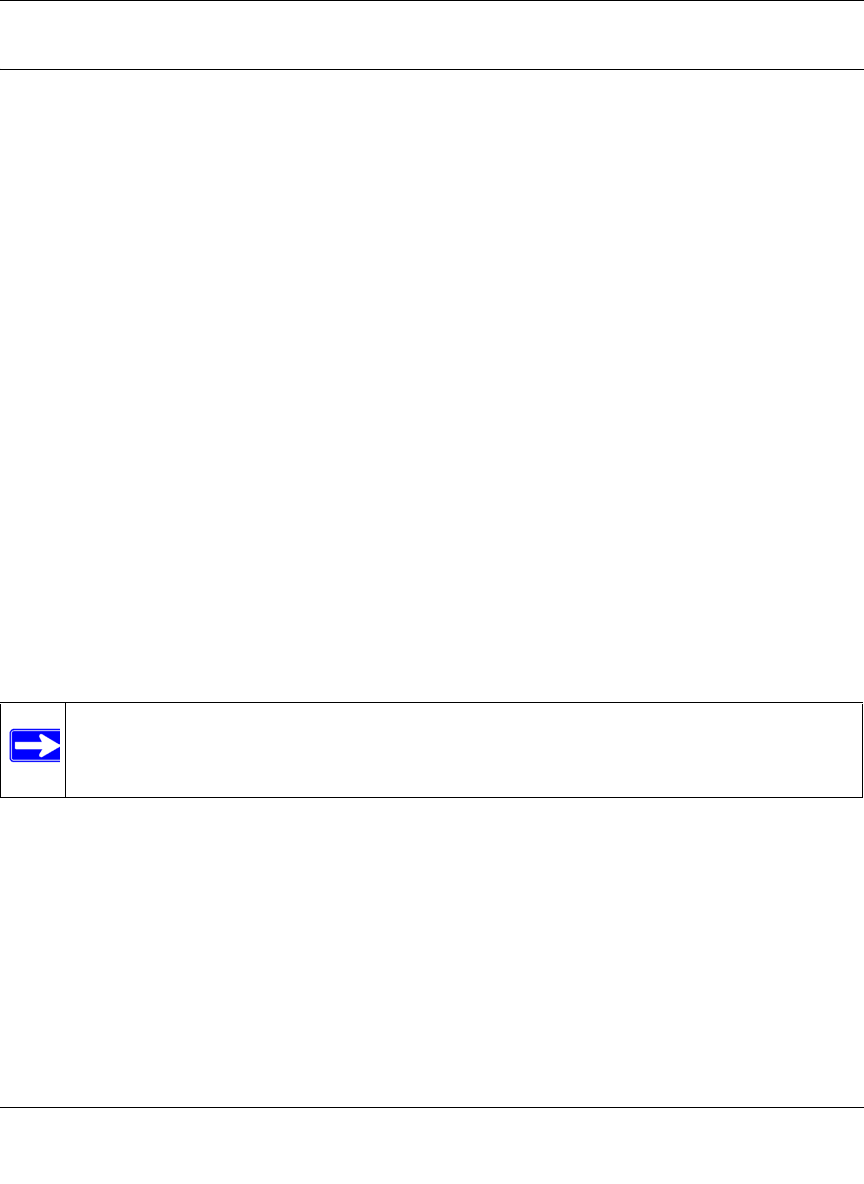
ProSecure Unified Threat Management (UTM) Appliance Reference Manual
Manually Configuring Internet and WAN Settings 3-19
v1.0, January 2010
Configuring Dynamic DNS
Dynamic DNS (DDNS) is an Internet service that allows devices with varying public IP addresses
to be located using Internet domain names. To use DDNS, you must set up an account with a
DDNS provider such as DynDNS.org, TZO.com, or Oray.net. (Links to DynDNS, TZO and Oray
are provided for your convenience as submenu tabs of the Dynamic DNS configuration menu.)
The UTM firmware includes software that notifies dynamic DNS servers of changes in the WAN
IP address, so that the services running on this network can be accessed by others on the Internet.
If your network has a permanently assigned IP address, you can register a domain name and have
that name linked with your IP address by public Domain Name Servers (DNS). However, if your
Internet account uses a dynamically assigned IP address, you will not know in advance what your
IP address will be, and the address can change frequently—hence, the need for a commercial
DDNS service, which allows you to register an extension to its domain, and restores DNS requests
for the resulting FQDN to your frequently-changing IP address.
After you have configured your account information on the UTM, when your ISP-assigned IP
address changes, your UTM automatically contacts your DDNS service provider, logs in to your
account, and registers your new IP address. Consider the following:
• For auto-rollover mode, you need a fully qualified domain name (FQDN) to implement
features such as exposed hosts and virtual private networks regardless of whether you have a
fixed or dynamic IP address.
• For load balancing mode, you might still need a fully qualified domain name (FQDN) either
for convenience or if you have a dynamic IP address.
To configure Dynamic DNS:
1. Select Network Config > Dynamic DNS from the menu.
2. Click the Dynamic DNS tab. The Dynamic DNS screen displays (see Figure 3-11 on page
3-20).
Note: If your ISP assigns a private WAN IP address such as 192.168.x.x or 10.x.x.x, the
dynamic DNS service does not work because private addresses are not routed on
the Internet.



